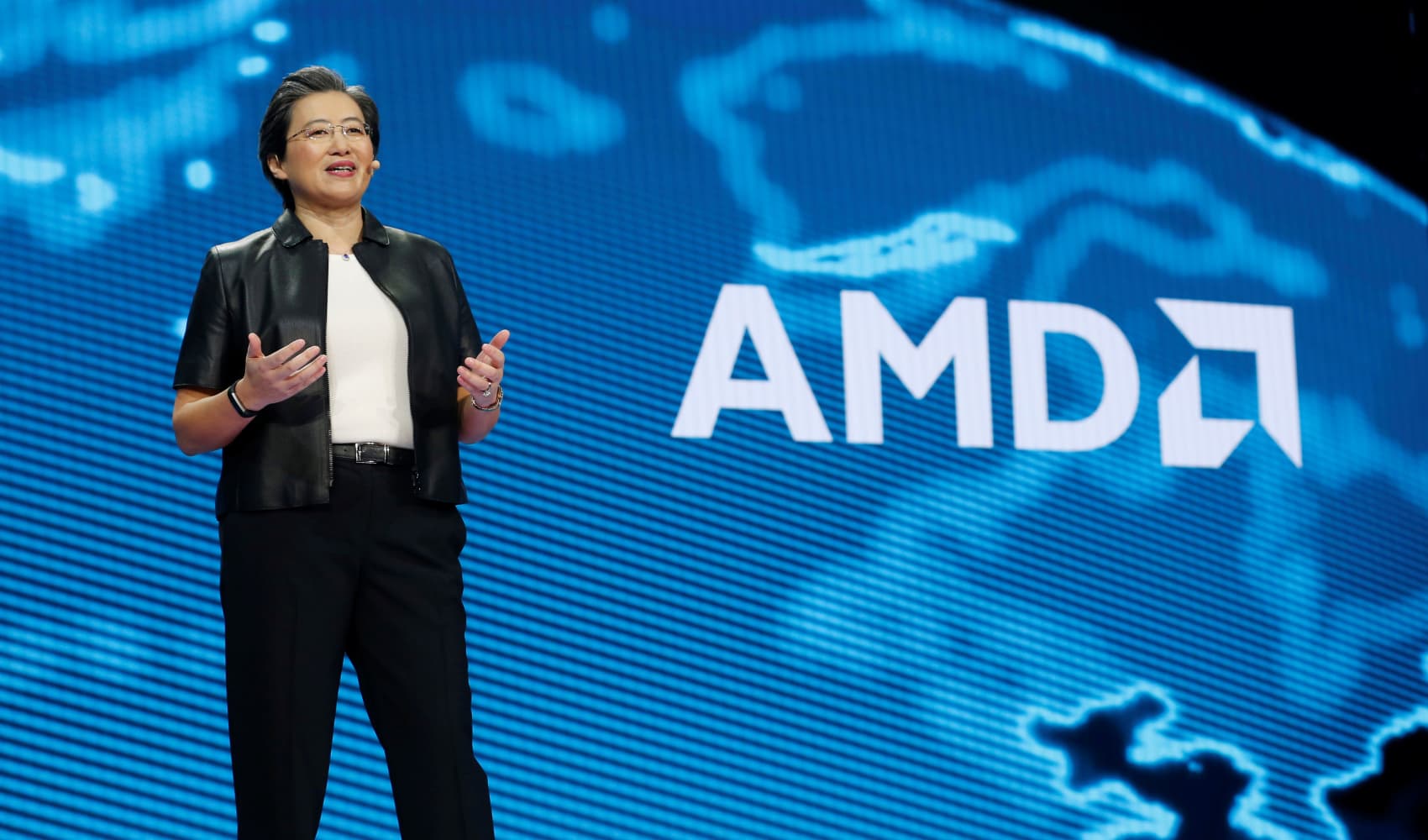Nvidia's AI Deal: 18,000 Chips to Saudi Arabia!
Saudi Arabia's AI Leap: Nvidia Ships 18,000 Cutting-Edge Chips!
Introduction: The AI Revolution in the Desert
Hold on to your hats, folks! The artificial intelligence landscape is about to get a whole lot hotter, and not just because of the desert sun. In a move that’s sending ripples throughout the tech world, Nvidia, the undisputed king of AI chips, is shipping over 18,000 of its most advanced processors to Saudi Arabia. This isn’t just a business deal; it’s a seismic shift in the global AI power balance. But what does this mean for Saudi Arabia, for Nvidia, and for the future of AI itself? Let’s dive in and unpack this game-changing announcement.
The Announcement: Nvidia's AI Powerhouse Goes Global
The news broke on Tuesday, courtesy of Nvidia's CEO, Jensen Huang. Speaking at the Saudi-U.S. Investment Forum in Riyadh, Huang revealed that Nvidia will be selling more than 18,000 of its state-of-the-art AI chips to Humain, a Saudi company. This isn't just a small shipment; this is a significant chunk of Nvidia's production capacity heading straight to the Middle East.
The Context: A White House-Led Push
This announcement wasn’t made in a vacuum. It was part of a larger White House-led initiative to foster stronger economic ties between the U.S. and Saudi Arabia. The trip, which included President Donald Trump and a cohort of top CEOs, signals a strategic alignment in the tech sector. It's like the US saying, "Hey, let's work together to build the future of AI."
Humain: The Saudi Company Leading the Charge
So, who is Humain? While details are still emerging, it’s clear that this Saudi company is poised to become a major player in the AI space. With the backing of Nvidia’s cutting-edge technology, Humain is set to build massive data centers capable of handling the most demanding AI workloads.
Building the Future: Data Centers of Tomorrow
These aren't your average data centers. According to Huang, these data centers will boast a staggering 500 megawatts of power. That's enough energy to power a small city, highlighting the sheer scale and ambition of this project. Think of it as building the infrastructure for a new AI-powered civilization.
The GB300 Blackwell Chips: Nvidia's AI Marvel
The heart of this deal lies in the GB300 Blackwell chips. These aren't just any processors; they are among Nvidia’s most advanced AI chips. We are talking about groundbreaking computational power that unlocks new possibilities for AI development, research, and deployment.
Why Blackwell? The Ultimate AI Engine
The Blackwell architecture is designed to handle the most complex AI tasks, from training massive language models to powering advanced simulations. With Blackwell, Humain will have the computational horsepower needed to tackle ambitious AI projects. It’s like giving them the keys to the AI kingdom.
Implications for Saudi Arabia: Diversifying the Economy
Saudi Arabia's Vision 2030 plan aims to diversify the nation's economy away from oil and gas. Investing heavily in artificial intelligence is a crucial part of this strategy. This initiative reflects a strategic commitment to becoming a hub for technology and innovation.
Beyond Oil: Building a Tech-Driven Future
By embracing AI, Saudi Arabia is not just diversifying its economy; it's also positioning itself as a leader in the digital age. This move could attract foreign investment, create new jobs, and drive economic growth. It's about building a future powered by algorithms, not just oil.
Implications for Nvidia: Expanding Global Reach
For Nvidia, this deal represents a significant expansion of its global reach. By partnering with Saudi Arabia, Nvidia gains access to a new market and solidifies its position as the dominant force in the AI chip industry.
Dominating the AI Landscape: A Strategic Partnership
This partnership strengthens Nvidia's dominance in the AI market. Supplying chips to Saudi Arabia allows Nvidia to have a significant footprint in a region poised to be a major player in the AI ecosystem. This is strategic positioning, plain and simple.
The Geopolitical Impact: A Shifting Global Power Dynamic
This deal has broader geopolitical implications. It signifies a closer collaboration between the U.S. and Saudi Arabia in the tech sector, potentially impacting the global balance of power in AI development.
AI as a Geopolitical Tool: A New Era of Competition
AI is becoming a crucial geopolitical asset, and countries are racing to develop and deploy it. This deal could spark increased competition and collaboration in the AI space, with nations vying for dominance. It's a digital arms race, and everyone wants the best weapons.
The Ethical Considerations: AI Responsibility
With great power comes great responsibility. As AI becomes more powerful, ethical considerations surrounding its development and deployment become increasingly important. Ensuring responsible use and preventing bias will be critical.
Guiding Principles: A Framework for Responsible AI
It’s important to establish ethical frameworks and guidelines for AI development. Ensuring that AI is used for good and doesn't perpetuate inequalities is a collective responsibility. We need to build AI that benefits everyone, not just a select few.
Future Trends: The Continued Growth of AI
The AI revolution is just getting started. Expect to see continued growth in AI adoption across various industries, from healthcare and finance to transportation and entertainment. The impact of AI will be profound and transformative.
Transforming Industries: AI's Pervasive Influence
AI will continue to revolutionize industries, creating new opportunities and disrupting existing business models. Businesses that embrace AI will thrive, while those that lag behind risk becoming obsolete. The future is AI-powered, and the time to adapt is now.
The Environmental Impact: Energy Consumption and Sustainability
Large-scale AI deployments require significant amounts of energy, raising concerns about environmental impact. Finding ways to reduce energy consumption and promote sustainability will be crucial.
Green AI: Striving for Sustainability
Developing energy-efficient AI hardware and algorithms is essential. Investing in renewable energy sources to power AI infrastructure can help mitigate the environmental impact. Let's build a sustainable AI future.
Conclusion: The Future is Now
Nvidia’s shipment of 18,000 AI chips to Saudi Arabia is more than just a news headline; it's a symbol of the rapidly evolving AI landscape. It signifies Saudi Arabia’s commitment to diversifying its economy and becoming a technology hub. It underscores Nvidia’s dominance in the AI chip industry and its expanding global reach. It highlights the geopolitical significance of AI and the ethical considerations surrounding its development. The AI revolution is here, and it's changing the world as we know it.
Frequently Asked Questions
Here are some frequently asked questions about Nvidia's deal with Saudi Arabia:
What exactly are AI chips used for?
AI chips are specialized processors designed to accelerate artificial intelligence tasks, such as training machine learning models, image recognition, natural language processing, and much more. They offer significant performance advantages over general-purpose processors for these specific tasks.
How will Saudi Arabia use these AI chips?
Saudi Arabia plans to use these AI chips to build large-scale data centers capable of handling complex AI workloads. This infrastructure will support various AI applications, including smart city initiatives, healthcare advancements, financial modeling, and research.
What are the potential benefits of this deal for Saudi Arabia?
This deal can bring numerous benefits to Saudi Arabia, including economic diversification, job creation, attraction of foreign investment, and the development of a thriving AI ecosystem. It also positions the country as a leader in technological innovation.
Will this deal affect the global AI landscape?
Yes, this deal has the potential to reshape the global AI landscape. It signifies a shift in AI power towards the Middle East and could intensify competition and collaboration among nations in the development and deployment of AI technologies.
What are the ethical considerations surrounding this deal?
Key ethical considerations include ensuring responsible AI development and deployment, preventing bias in algorithms, protecting data privacy, and promoting transparency. It's important to establish ethical guidelines to ensure that AI benefits everyone and doesn't exacerbate existing inequalities.

